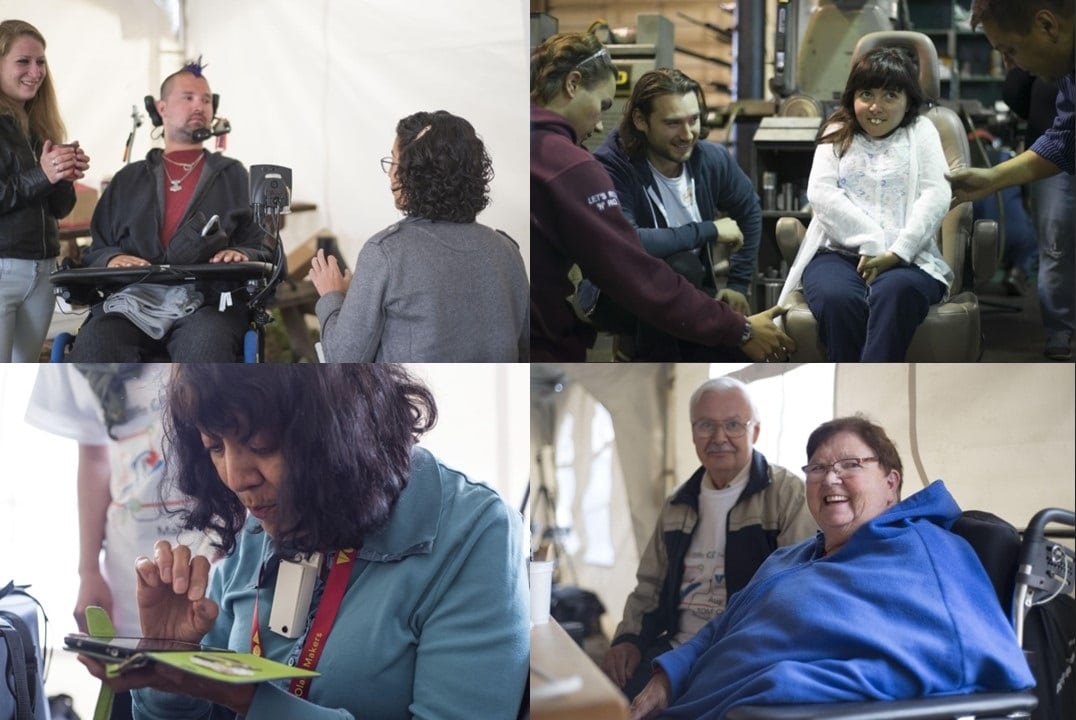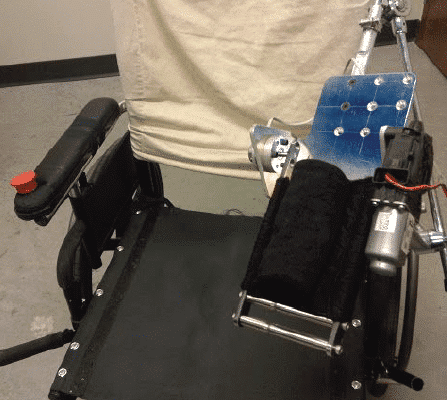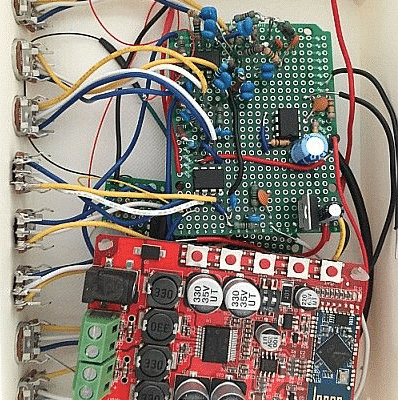12:15 GMT
IEEE’s core purpose is to foster technological innovation and excellence for the benefit of humanity. Often during presentations and talks all across IEEE events, we hear the famous tagline “Advancing Technology for Humanity”. This was indeed the force behind my volunteering and involvement with IEEE over past 8 years. As a graduate student, we intend to focus ourselves on research, writing papers and thesis involving complex topics, abstract mathematics, electronics, and physics. Being a Ph.D. student, I got attracted to IEEE not because it’s the world largest organization but I was captivated by the tagline of IEEE. Since my research studies are focused on the design of high-efficiency broadband power amplifiers, I joined Microwave Theory and Techniques Society in the year 2010.
Today I will write as an honest Young Professional member of IEEE MTTS. The society gave me a plethora of opportunities to advance my professional, technical career in past years. After 4 years of cut-throat competition to be a top performer in my studies, research, scholarships and, awards, I was always confused whether engineering is the right career for me or not. I always used to wonder ‘How can I bridge and use the knowledge I am acquiring through studies for the betterment of humanity?’. I was fortunate to be raised in a family of philanthropists who devoted their life educating masses below the poverty line. As a result, whatever I choose in my professional career, I am always inclined to humanitarian initiatives. In the year 2015, during one of the chapter chair meetings, I came across the IEEE MTTS Special Interest Group on Humanitarian Initiatives (SIGHT) which was started by IEEE past president Peter Staecker along with MTTS past president Tim Lee. Since then, I got associated with MTTS SIGHT initiatives which were driven by enthusiasm and excitement to find sustainable solutions for the existing humanitarian challenges. Often the humanitarian initiatives are centered around outreach, educating masses, conference talks, lectures etc. But fortunately, being engineers we shoulder the responsibility to look into these humanitarian problems with a different angle which is technically oriented, scalable and reliable at the same time.
MTTS SIGHT has been partnering and making an impact in various different events in parts of Asia and Latin America. With good progress on different fronts, the expectation of bringing sustainable models for humanitarian activities becomes very important. With this quest, we worked on a concept of “Makeathon” – the technical marathons, which provided technical solutions to humanitarian challenges. “The concept can be summarized in simple words as bringing in a bunch of engineers and people with knowledge of a challenge, locking them together in a big room with tools and letting them generate a problem statement which they have to solve in 72 hours.”

Makeathon 2016, organized by Tikkun Olam Makers, a global not-for-profit based founded in Israel in 2014 in collaboration with IEEE SIGHT Southern Alberta Section, was a three-day marathon of making wherein solutions to challenges posed by individuals facing various disabilities were developed with adherence to human-centered design principles. The makeathon, held at EGB Manufacturing in Cochrane, Alberta from August 26-28, 2016, brought together engineers, designers, students, machinists, and people living with disabilities of all ages and backgrounds. Challenges addressed with design and technology included those posed by disabilities such as Rett syndrome, vision impairment, hearing loss, dyslexia, quadriplegia, Parkinson’s disease, and, stroke.

The majority of makers were affiliates of the University of Calgary, providing a large number of undergraduate students with mentorship opportunities from experienced machinists and professors. The nature of these challenges was such that there exists no off-the-shelf viable solution. This is because either market demographics are insufficient to drive innovation, the industry has failed to set a reasonable price-point, a highly-personalized solution is required, or any combination of the aforementioned
ASSISTIVE TECHNOLOGY PROJECTS
a) A portable track lift for quadriplegia
 Individuals living with quadriplegia very often lack a safe way to transition from their wheelchairs to a bed and vice versa. Market solutions for this tend to be non-mobile stationary units built into a room and cost more than ten thousand dollars. A portable device was designed that is capable of: (1) lifting the quadriplegic person up from their wheelchair to bed (2) transition to their bed/wheelchair (3) being disassembled such that the caregiver would be able to easily transport and install the system on the go to a hotel or a relative’s home during travel.
Individuals living with quadriplegia very often lack a safe way to transition from their wheelchairs to a bed and vice versa. Market solutions for this tend to be non-mobile stationary units built into a room and cost more than ten thousand dollars. A portable device was designed that is capable of: (1) lifting the quadriplegic person up from their wheelchair to bed (2) transition to their bed/wheelchair (3) being disassembled such that the caregiver would be able to easily transport and install the system on the go to a hotel or a relative’s home during travel.
Future Design Scopes:
The project has been selected for post-Makeathon Development Group Program. The main redesign scopes include (1) Increasing factor of safety to 5 or higher to account for fatigue. (2) Replace winch with a higher torque motor to account for changing body type of need-knower. (3) perform overall stress analysis of assembly (During Makeathon analysis was performed only on individual parts).
 b) A chair with height adjustment for a child with Rett Syndrome
b) A chair with height adjustment for a child with Rett Syndrome
Rett syndrome is a neurological condition affecting nearly exclusively young girls, and has debilitating effects, including the lack of development of motor skills, inability to speak or control eye movement, and slowed growth. This can be extremely impactful on families as this condition seems to be triggered around 6 months of age with no indications beforehand. While many devices exist to assist families and caregivers with their day-to-day activities and overcoming mobility issues, there is a lack of devices that promote familial integration, which is exactly what the Villeneuve family was searching for. This chair was designed to allow their daughter, Hillary, to leave her regular wheelchair and mobility devices to enjoy a comfortable seat that was specifically adjustable to the dining table and couch levels, but any range in between. The designers worked with the family and caregiver to determine that placing Hillary in the chair was already becoming an issue and one that would continue as she grew. As such, they introduced a “ground level” setting which was agreed upon as the least strenuous on whoever was to be moving her from seat to seat, and easy to operate to take her to whatever level was appropriate. The designers made certain that while the function of the chair was paramount, the look of the chair was to complement their living space and blend in with their home furniture, as well as being mobile to accommodate their active lifestyles.
c) Stroke rehabilitation robot
 The process and purpose of rehabilitation for stroke patients varies widely. For patients that could not receive timely physiotherapy, a robot can provide assistance for exercises as a first step to open the door to comprehensive rehabilitation programs. A wheelchair-mounted, elbow motion exercise assistant was designed and built for the purpose of passively exercising the elbow. It consists of a clamp for mounting on the chair’s armrest, an upper arm support, and a forearm manipulator. Because of the highly personalized nature of this design, this particular device is not positioned for mass-market success. However, the design’s adaptation by others was facilitated by focussing on ease of manufacturing and assembly as several components are made using off-the shelf components. For example, the motor is a car door window motor, and the clamps were recycled from musical drum instruments. The device provides passive exercise by periodically changing the angle of the forearm with respect to that of the upper arm with a motor. A position (rotary potentiometer) and a force sensor (force sensitive resistor) provide measurements to a microcontroller (PIC16LF1825) that monitor the state of the robot in real time. A fuzzy controller was implemented to ensure that the applied force does not exceed a predefined threshold. Other safety considerations include an emergency stop button.
The process and purpose of rehabilitation for stroke patients varies widely. For patients that could not receive timely physiotherapy, a robot can provide assistance for exercises as a first step to open the door to comprehensive rehabilitation programs. A wheelchair-mounted, elbow motion exercise assistant was designed and built for the purpose of passively exercising the elbow. It consists of a clamp for mounting on the chair’s armrest, an upper arm support, and a forearm manipulator. Because of the highly personalized nature of this design, this particular device is not positioned for mass-market success. However, the design’s adaptation by others was facilitated by focussing on ease of manufacturing and assembly as several components are made using off-the shelf components. For example, the motor is a car door window motor, and the clamps were recycled from musical drum instruments. The device provides passive exercise by periodically changing the angle of the forearm with respect to that of the upper arm with a motor. A position (rotary potentiometer) and a force sensor (force sensitive resistor) provide measurements to a microcontroller (PIC16LF1825) that monitor the state of the robot in real time. A fuzzy controller was implemented to ensure that the applied force does not exceed a predefined threshold. Other safety considerations include an emergency stop button.
d ) Digital audio solution for hearing loss due to membrane stiffening
 For certain individuals with hereditary hearing loss, the frequency profile of sounds from electronic sources cannot be recovered using hearing aids alone. Digital audio, from speech or sound, cannot, therefore, be fully enjoyed by this population. An equalizer was designed and built to amplify selected frequency bands to compensate for the hearing loss profile. The device consists of a 3d-printed case enclosing electronic circuitry, with a line out to a set of headphones. The front of the case has dials for the user to adjust the amplification of the signal in specific frequency bands. The device is powered by a rechargeable 9 V battery. The audio signal is transmitted wirelessly via Bluetooth to a receiver (XCSOURCE TDA7492P) enclosed in the box. The solution was realized for analog signals, using MCP 6002 operational amplifiers and RC-networks to realize the array of active filters. Product refinements noted by the project team include redesigning the enclosure to allow for access to the battery, developing a printed circuit board with surface mount parts to enable a more compact design, and providing robustness to noise
For certain individuals with hereditary hearing loss, the frequency profile of sounds from electronic sources cannot be recovered using hearing aids alone. Digital audio, from speech or sound, cannot, therefore, be fully enjoyed by this population. An equalizer was designed and built to amplify selected frequency bands to compensate for the hearing loss profile. The device consists of a 3d-printed case enclosing electronic circuitry, with a line out to a set of headphones. The front of the case has dials for the user to adjust the amplification of the signal in specific frequency bands. The device is powered by a rechargeable 9 V battery. The audio signal is transmitted wirelessly via Bluetooth to a receiver (XCSOURCE TDA7492P) enclosed in the box. The solution was realized for analog signals, using MCP 6002 operational amplifiers and RC-networks to realize the array of active filters. Product refinements noted by the project team include redesigning the enclosure to allow for access to the battery, developing a printed circuit board with surface mount parts to enable a more compact design, and providing robustness to noise
e) A posture correction device for the visually-impaired
 While loss of vision is a condition several people live with every day to varying degrees, there are side-effects experienced by individuals with exceptionally poor vision. One such individual was Gloria Rubio, who has a condition akin to severe nearsightedness, did not work with her team to combat her vision but that her back has suffered due to her leaning in to be able to read plans, pictures, and various writings. What she sought was a discrete means of reminding her to correct her posture when she is bent over beyond a threshold she has set. What she and her team developed was a small enclosure containing a gyroscope, a means of vibration, and a small circuit board to control all the actions. All GLoria has to do is to arrange the casing on her person out of sight, calibrate it to her as she’s standing with the press of a button, and whenever she is bent over too long or too far, the device will give her a discrete reminder to correct her posture.
While loss of vision is a condition several people live with every day to varying degrees, there are side-effects experienced by individuals with exceptionally poor vision. One such individual was Gloria Rubio, who has a condition akin to severe nearsightedness, did not work with her team to combat her vision but that her back has suffered due to her leaning in to be able to read plans, pictures, and various writings. What she sought was a discrete means of reminding her to correct her posture when she is bent over beyond a threshold she has set. What she and her team developed was a small enclosure containing a gyroscope, a means of vibration, and a small circuit board to control all the actions. All GLoria has to do is to arrange the casing on her person out of sight, calibrate it to her as she’s standing with the press of a button, and whenever she is bent over too long or too far, the device will give her a discrete reminder to correct her posture.
g) Versatile dexterity aide for household use
 Stroke patients sometimes suffer permanent loss of dexterity in the limbs and/or hands, reducing their independence to manipulate household appliances such as a stove, oven, coffee maker, and faucet. A 3D-printed, ergonomic, squirrel-shaped plastic model was produced to assist with tasks in and around the kitchen. The design is based on a wooden model, which has proven to be successful among seniors and stroke-survivors as identified by the design team and its need-knower. The 3D-printed design, made with ABS, improves on its wooden counterpart by being more sanitary (it is dishwasher safe), and the installation of a stylus in the “nose” allowing for interaction with touchscreen appliances.
Stroke patients sometimes suffer permanent loss of dexterity in the limbs and/or hands, reducing their independence to manipulate household appliances such as a stove, oven, coffee maker, and faucet. A 3D-printed, ergonomic, squirrel-shaped plastic model was produced to assist with tasks in and around the kitchen. The design is based on a wooden model, which has proven to be successful among seniors and stroke-survivors as identified by the design team and its need-knower. The 3D-printed design, made with ABS, improves on its wooden counterpart by being more sanitary (it is dishwasher safe), and the installation of a stylus in the “nose” allowing for interaction with touchscreen appliances.
WHY MAKEATHONS MATTER?
The Makeathons are highly localized in nature and can be sustained by the local group of volunteers. A significant achievement of the makeathon was the successful completion of 7 of the 8 projects. Here, success is defined as the prototype having met the user’s basic needs, and incorporate critical features, as determined through interviews with the need-knower. Only one project failed to incorporate these features, and a relatively high level of design remains. The beauty of Makeathon prototypes is they can be replicated in any part of the world using the user instruction manual which we will be releasing as part of this program soon. To improve our maker retention for the 2017 event, and accelerate the refinement of projects, the Developer Groups Program is launching early, at the end of September of this year. The outcomes of the Developer Groups program will support the goals of the makeathon events but are not included in this report.
I was impressed by the thoughtfulness of the makethons candidates and by the quality of projects in service to humanitarian purposes. All the teams showed their enthusiasm and enjoyed the friendly environment and also achieved excellent solutions leveraging technology for the needs of the community.
– Anis Ben Arfi, SIGHT Chair, Southern Alberta Section
“TOM Makeathons build a more inclusive society by connecting people who face an everyday challenge with people who can help solve them. Makers and need-knowers alike learn new technical skills, work as part of a diverse team, and then share their innovation with the world.”
– Kathyrn Simone, TOM Alberta Chapter

– Tushar Sharma, Vice Chair, MTTS SIGHT